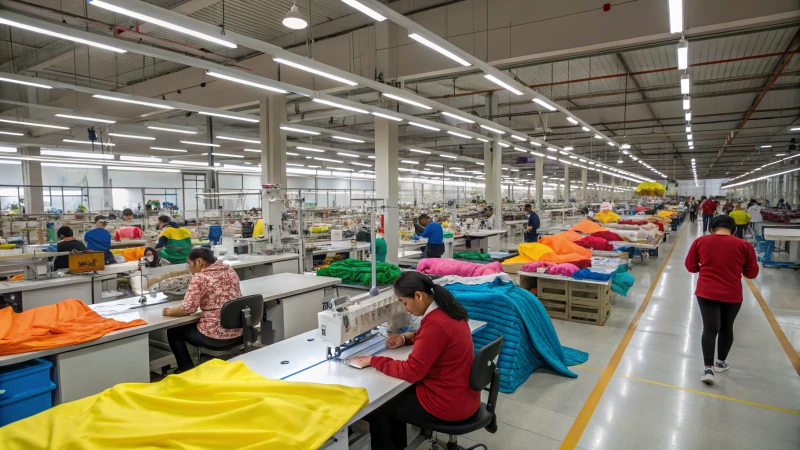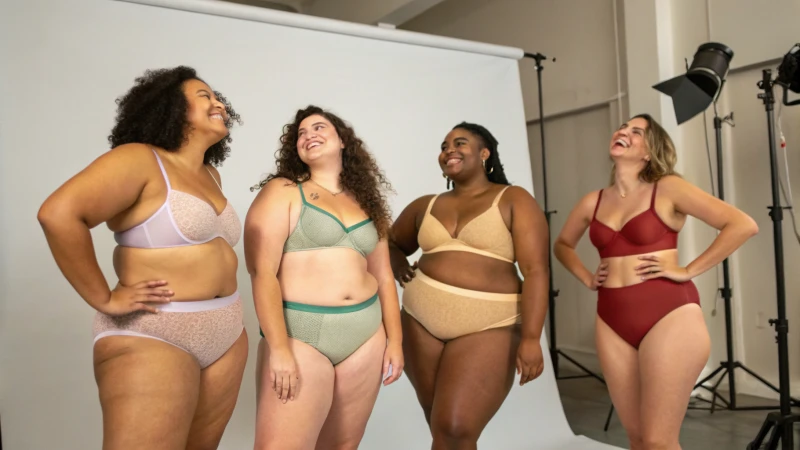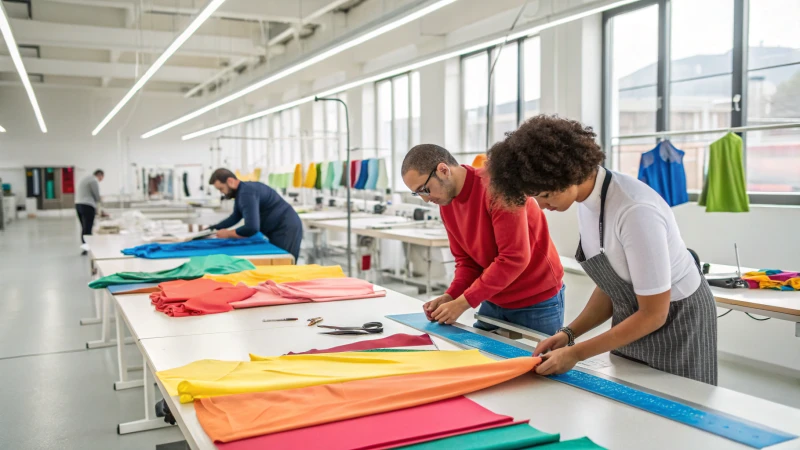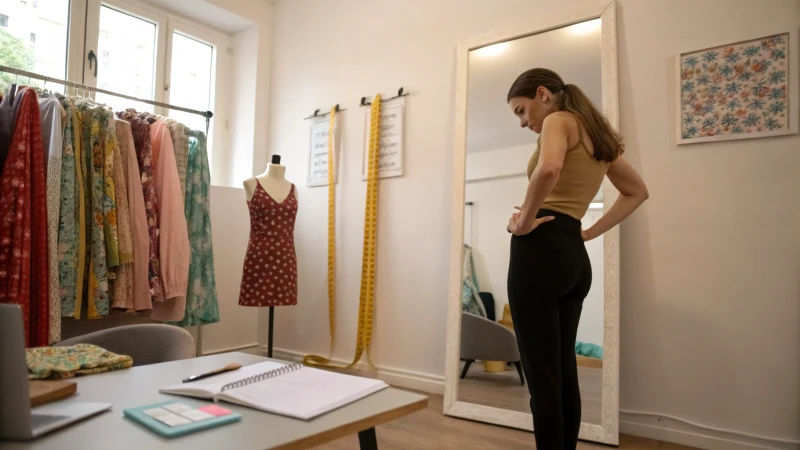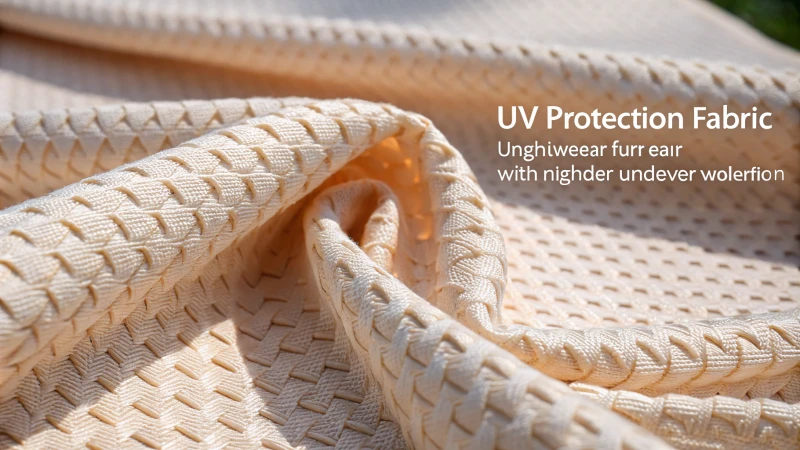
Recall the day when sunburn appeared on the strangest spots. Rethink skin protection now. Start this change with the garments closest to the body.
UV protection fabric in underwear shields skin efficiently. It uses tightly woven fibers to stop ultraviolet rays. UV-absorbing treatments also help block these harmful rays. Special dyes add another layer of protection. These elements work together. They lower skin damage risk in covered areas. Probably, they are a smart addition to your sun protection plan. Yes, a smart addition.
I remember being surprised by a sunburn in a place I never thought about. This taught me that protecting skin from UV rays matters everywhere, not just on open skin. Learning how UV protection fabrics work might really change your mind about staying safe in the sun. These fabrics do more than just cover your skin; they cleverly stop UV rays through smart design. It's like magic. Let's look at what's special about these clothes and how they guard you when you step outside in the sunshine.
UV protection fabrics use tightly woven fibers.True
Tightly woven fibers block UV rays effectively, reducing skin exposure.
All UV protection fabrics contain chemical treatments.False
Some UV fabrics rely on dyes or weaves, not chemicals, for protection.
How Do UV-Blocking Fibers Work in Underwear?
Do you ever think about how your underwear keeps you safe from the sun's rays?
Fibers in UV-blocking underwear use tightly woven fabrics, chemical treatments and special dyes. This mix reduces UV ray penetration. These fibers usually have a high UPF, which means they offer great protection from the sun's harmful rays.
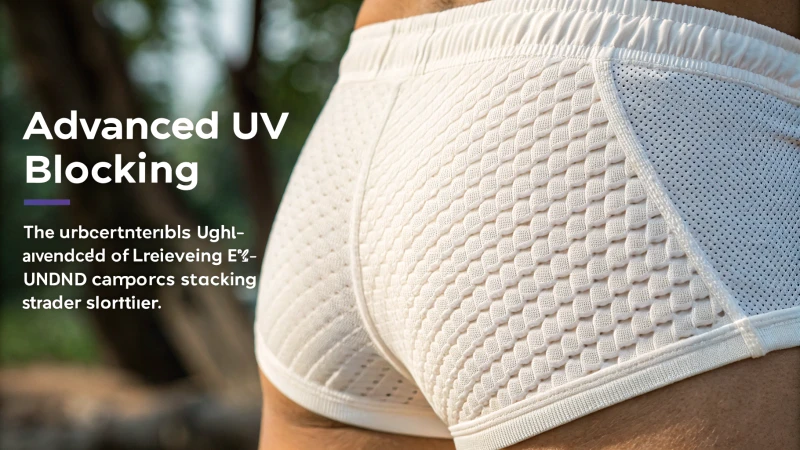
Tightly Woven Fabrics
One summer, I relaxed by the pool, enjoying the sun until my skin started to burn. That's when I understood the magic of tightly woven fabrics in UV-blocking underwear. These fabrics block the sun by keeping threads close, protecting my skin from harmful rays. It's like an invisible shield that offers comfort and safety.
The primary method for blocking UV rays is through tightly woven fabrics. These fabrics are designed to have minimal gaps between the threads, reducing the ability of UV rays to penetrate. The tighter the weave, the more effective the protection.
Chemical Treatments
When I first learned about UV-blocking underwear, I was curious about chemical treatments. Think of tiny protectors in the fabric, stopping UV rays before they reach you. These treatments add to the fabric's natural protection and bring peace of mind on sunny days.
Many UV-blocking fabrics are treated with UV-absorbing chemicals during manufacturing. These chemicals can absorb or reflect UV radiation, preventing it from reaching the skin.
Role of Dyes and Pigments
Darker clothes on a sunny day not only look stylish but also give extra sun protection. Special dyes work similar magic, soaking up more UV rays. Color choice isn't just about fashion; it's a smart way to defend against the sun!
| Dye Type | UV Protection Level |
|---|---|
| Dark Dyes | High |
| Light Dyes | Low |
Importance of UPF Ratings
I check labels for UPF ratings when buying protective clothing. Higher UPF, like 50+, means over 98% of harmful rays are blocked. This information is vital for those who love the outdoors but want to stay safe.
The effectiveness of UV-blocking underwear is measured using the Ultraviolet Protection Factor (UPF). A higher UPF rating means better protection against UV rays.
Mineral Additives for Extra Protection
Minerals like titanium dioxide or zinc oxide in fabrics capture my attention. These natural UV blockers either reflect or absorb rays, adding an extra layer of defense—it's like having sunscreen that never fades! Learn more about mineral additives1.
Some fabrics incorporate minerals like titanium dioxide or zinc oxide as natural blockers.
Balancing Moisture-Wicking with UV Protection
Imagine hiking with the sun blazing down and wanting to stay dry. Moisture-wicking properties help keep you comfortable while still offering UV protection—truly important for enjoying the outdoors.
Moisture-wicking properties in fabrics are crucial for maintaining UV protection since wet fabrics can allow more rays through.Explore moisture-wicking technology2.
Durability and Longevity in Protective Underwear
Protective underwear must last to do its job effectively over time—my favorite pair went through many adventures and still kept me safe! This strength is key for long-lasting sun protection and comfort.
UV-protective underwear is crafted to remain effective even after multiple washes ensuring continued benefits from regular use.
Blending these ideas together creates a strong shield with UV-blocking fibers in underwear making outdoor adventures carefree and fun.
Tightly woven fabrics block UV rays effectively.True
Tightly woven fabrics reduce gaps, preventing UV ray penetration.
Light dyes provide high UV protection in underwear.False
Light dyes offer low UV protection; dark dyes are more effective.
How Do Chemical Treatments Enhance UV Protection?
Think of the time you underestimated the sun and turned red like a lobster! We all have stories like that. Understanding how chemicals in fabrics defend us from UV rays is important.
Chemical treatments in UV-protective fabrics use compounds that absorb or reflect ultraviolet light. These special compounds really lower the skin's exposure to dangerous rays.
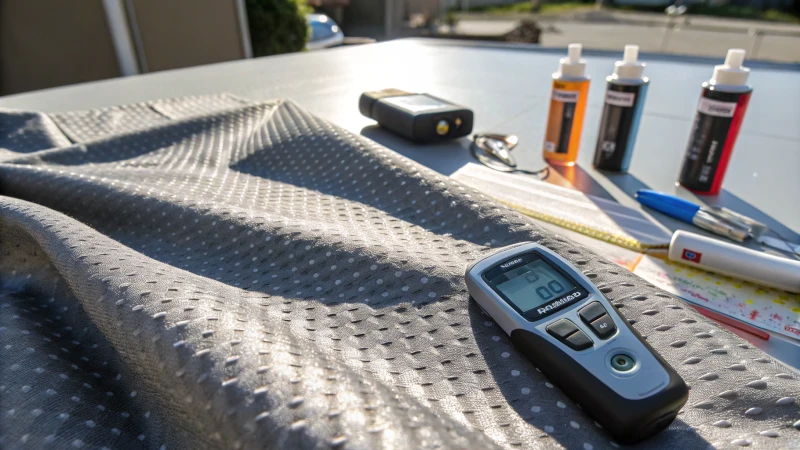
Understanding Chemical Treatments in UV Protection
I clearly remember my first sunburn. It happened after a beach day, feeling untouchable under the sun. Now, I take sun protection seriously. Chemical treatments in fabrics act like an unseen shield I wish I had back then. They use UV-absorbing compounds during manufacturing to lower our skin's exposure to harmful rays.
How Do Chemical Treatments Work?
It's amazing how these treatments function. Picture tiny warriors in your clothes, absorbing or scattering UV rays away from your skin. Common warriors include avobenzone3 and oxybenzone4. They effectively block both UVA and UVB rays. It's like having a personal army that defends you against the sun's harshness.
Benefits of Chemical Treatments
- Better Protection: Some clothes probably make you feel safer in the sun. Treated fabrics have a higher Ultraviolet Protection Factor (UPF). They offer improved shielding.
- Durability: Many treatments survive multiple washes. You probably won't worry about losing that protective barrier over time.
- Versatility: These treatments suit different fabric types. They work on cotton or synthetic materials.
Comparing Chemical and Physical UV Blockers
| Aspect | Chemical Blockers | Physical Blockers |
|---|---|---|
| Composition | Absorb UV radiation | Reflect/scatter UV radiation |
| Common Examples | Avobenzone, Oxybenzone | Titanium dioxide, Zinc oxide |
| Application | Typically found in lotions, creams, and treated fabrics | Often used in thicker creams |
| Effectiveness | Effective against both UVA and UVB with proper formula | Generally effective against broad spectrum |
Industry Applications
Chemical treatments aren't solely for sunscreen; they play a key role in clothing manufacturing5. Many companies include these treatments in their products, providing us with more sun-safe clothing options this way.
Innovations in Chemical Treatments
The science behind these treatments is evolving. Researchers are probably looking to create new compounds that protect better and are gentler to our environment. Imagine every piece of clothing you own offering superior UV protection6 without any eco-guilt!
Chemical treatments enhance UV protection in fabrics.True
Chemical treatments involve UV-absorbing compounds that reduce skin exposure.
Physical UV blockers are more durable than chemical ones.False
Chemical treatments often withstand multiple washes, maintaining effectiveness.
Why Are High UPF Ratings Important for Underwear?
Think of your underwear as an invisible shield that protects your skin from harmful UV rays. This may feel like a scene from a sci-fi film, yet it actually happens with fabrics that have a high UPF rating.
High UPF ratings in underwear are very important. They protect delicate skin from harmful UV rays. UPF 50+ stops up to 98% of UV radiation. This protection lowers the risk of skin damage. It really does.

Understanding UPF Ratings
I recall standing on a bright beach, putting sunscreen on my arms and face but forgetting parts covered by clothes. I didn't know then how much fabric protection matters. UPF, or Ultraviolet Protection Factor, is like SPF but for clothes. It measures how well fabric blocks UV rays. Higher numbers mean better protection. A piece with a UPF rating of 50+ allows only 2% of UV rays to pass through. This is very reassuring.
| UPF Rating | UV Protection Level |
|---|---|
| 15-24 | Good |
| 25-39 | Very Good |
| 40-50+ | Excellent |
The Science Behind UPF in Underwear
I got intrigued when I discovered high UPF underwear. These aren't just normal fabrics; they use special materials and techniques to block UV rays. Imagine UV-blocking fibers7 tightly woven together - this isn't only for comfort but also sun safety.
These materials are used during the production process8 and stay strong even after many washes.
Health Benefits of High UPF Underwear
It's not merely fashion; it's about health. Protecting sensitive areas with high UPF underwear really reduces skin damage, especially if you enjoy being outdoors. Don't forget those moisture-wicking properties9 that keep you dry while adding more UV protection.
Innovations in UV Protective Fabric
Fabric technology developments are truly amazing. Some materials use titanium dioxide, working like a mirror to reflect or absorb UV rays. This is true innovation.
Options like these promise protection without needing constant reapplication.
Comparison with Other Sun Protection Measures
SPF lotions need frequent application, but UPF is a fabric measure providing continuous protection. It’s one less concern when in the sun.
Choosing high UPF clothing is a smart way to guard against harmful sun effects, enhancing the benefits of regular sunblock.
Adding high UPF-rated underwear in your closet is not just about looking good - it's a smart mix of comfort and health benefits with advanced textile technology that keeps your skin safe from dangerous UV exposure every day.
UPF 50+ underwear blocks 98% of UV rays.True
A UPF rating of 50+ allows only 2% of UV rays through.
Wet fabrics increase UPF effectiveness.False
Moisture can decrease the effectiveness of UV protection in fabrics.
How Do Moisture-Wicking Properties Enhance UV Protection?
Do you ever think about how certain fabrics keep you cool while also blocking the sun's rays? These materials use special powers to wick away moisture and protect from UV light. Let's explore this fascinating combination.
Moisture-wicking fabrics help block UV rays. They keep skin dry. Dry skin stops UV rays from going through fabric. These fabrics really work well for outdoor fun.
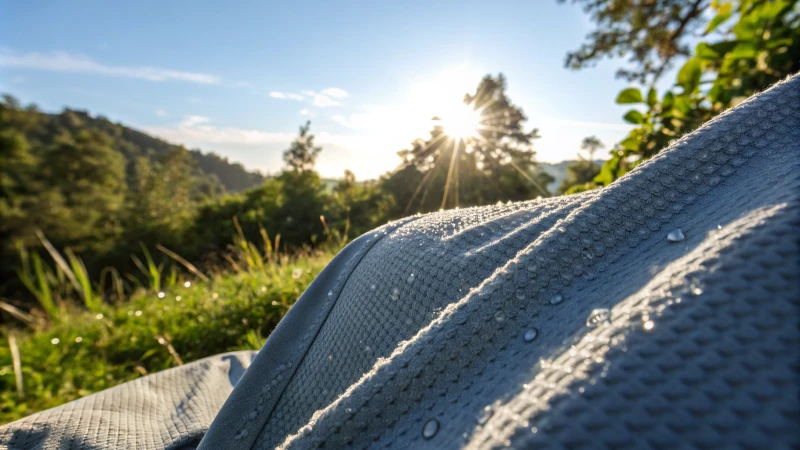
The Science Behind Moisture-Wicking
I grew up in a very sunny place and learned that the right clothes really matter for keeping cool. Moisture-wicking fabrics help because they move sweat away from the skin to the outside of the clothes. Imagine running a marathon and your clothes feel helpful, not bothersome. Dry skin stays protected since UV rays have a hard time going through dry materials. This fact is really important for staying safe in the sun.
When the skin is dry, the effectiveness of UV protection10 in the fabric increases as UV rays have a harder time penetrating dry material compared to wet.
Improved UV Protection
I used to think any shirt was okay for a sunny day until I found out that wet clothes let in more UV rays, like a door open to the sun. Moisture-wicking clothes keep their UPF rating high by keeping me dry. They work like a shield that gets stronger when needed most.
UV protection is significantly enhanced when fabrics remain dry. Wet fabrics can allow more UV radiation to pass through, thus reducing the effectiveness of any built-in UV protection.
| Fabric Type | Moisture-Wicking Capability | UV Protection Level |
|---|---|---|
| Cotton | Low | Medium |
| Polyester | High | High |
| Nylon | Moderate | Moderate |
Comparing Fabrics: Cotton vs. Polyester
Trying polyester instead of cotton for a hike changed my view. Cotton feels nice but keeps sweat, lowering its UV protection when wet. Polyester felt perfect for adventure - moving moisture away and blocking UV rays well.
When considering fabrics for UV protection, understanding the differences in moisture-wicking properties11 is crucial.
Additional Factors in Fabric Design
Colors and dyes in clothes affect sun protection. I chose a dark, specially dyed shirt once and felt more shielded from the sun. These fabrics soak up more UV rays, adding extra protection.
The role of dyes and pigments in fabrics also influences UV protection. Darker or specially dyed materials can absorb more UV rays, preventing them from penetrating the fabric.
Combining these with moisture-wicking properties further enhances their protective ability.
Exploring how these elements interact to maximize sun protection12 can guide consumers in making informed clothing choices for outdoor wear.
Moisture-wicking fabrics increase UV protection.True
Dry skin enhances UV protection as UV rays penetrate wet fabric more easily.
Cotton provides better UV protection than polyester.False
Polyester wicks moisture better, maintaining higher UV protection than cotton.
Conclusion
UV protection fabric in underwear effectively blocks harmful rays using tightly woven fibers, chemical treatments, and special dyes, enhancing skin safety during outdoor activities.
Discover how minerals like titanium dioxide enhance fabric's UV protection by reflecting harmful rays. ↩
Learn why keeping skin dry with moisture-wicking technology helps maintain effective UV protection. ↩
Learn how avobenzone functions as a UV filter, providing extensive UVA protection in sunscreens. ↩
Explore oxybenzone's effectiveness and controversies in sunscreen formulations. ↩
Discover techniques used by manufacturers to integrate UV protection into garments. ↩
Stay updated on the cutting-edge developments enhancing UV protective measures. ↩
Discover how UV-blocking fibers enhance fabric's sun protection capabilities and contribute to higher UPF ratings. ↩
Learn about the processes involved in creating UV-protective fabrics that maintain their efficacy over time. ↩
Explore how moisture-wicking fabrics help keep you dry and enhance UV protection. ↩
Understand how staying dry with moisture-wicking fabrics boosts UV protection. ↩
Learn about fabric choices for optimal moisture management and sun safety. ↩
Discover how dyes influence UV protection in conjunction with moisture-wicking. ↩


